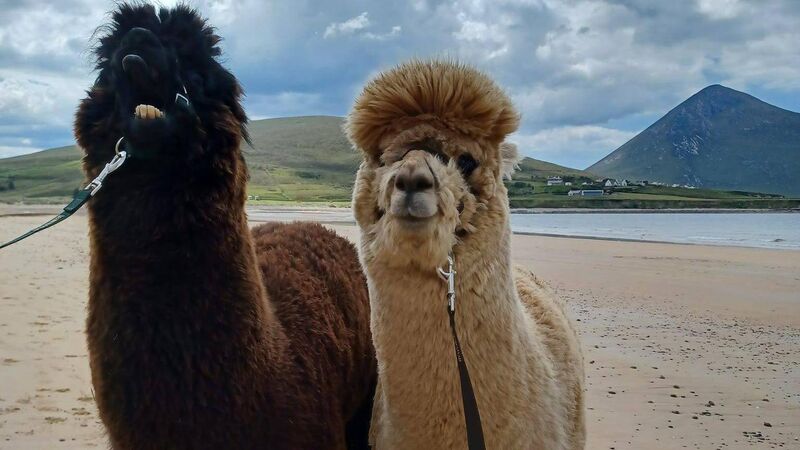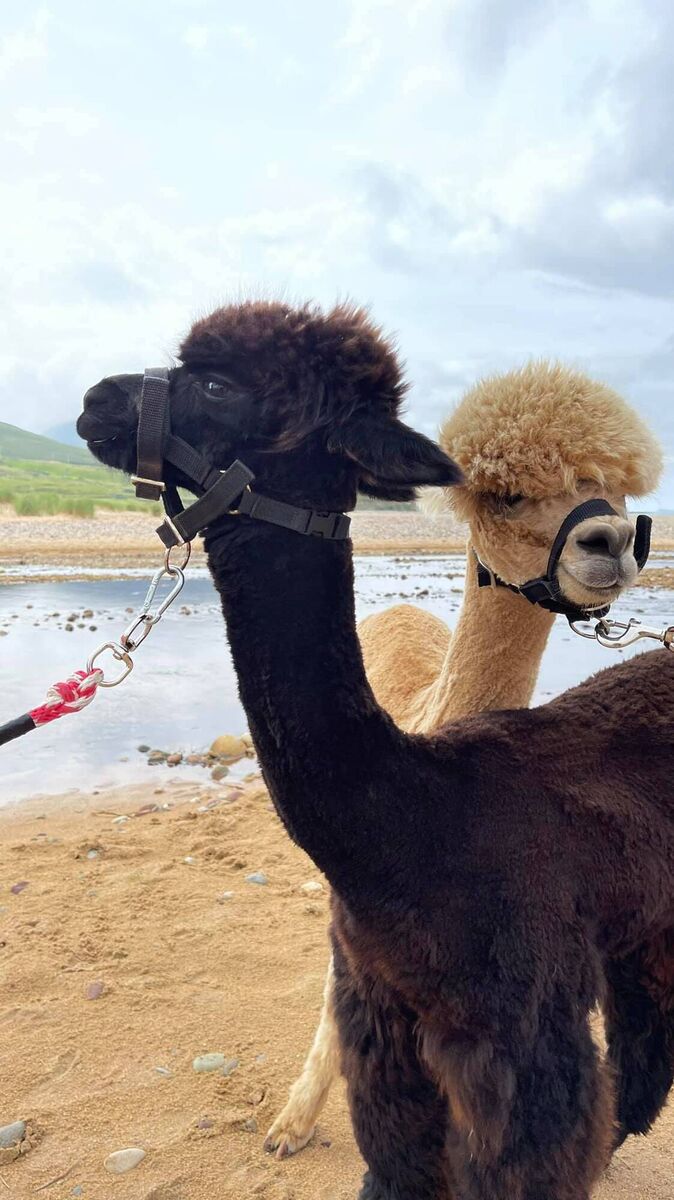Richard Collins: Childhood memories of feeding alpacas in Irish countryside

Achill Island Alpacas Treks with Bailey and Bruno at Golden Strand, Dugort, Achill Island, County Mayo
My grandchildren went trekking with alpacas on Achill Island last week. They were introduced to two of the South American exotics; Bailey, a cream-coloured one called after the whiskey liqueur, and Bruno, who has a beautiful black coat.
The alpaca, with its large Bambi-like eyes and exquisite eyelashes, is a most endearing creature. Nor is the small bird-beak mouth intimidating to a child. Being up close and personal with such exotic creatures, and feeding them by hand, is an unforgettable experience. John McNamara, their keeper, was assisted by Mandy his lively border collie. The dog, a chaperone and security guard, encircled her charges constantly, keeping them in check.
You mustn’t pat alpacas on the head, John warned; they don’t like it. Nor should you approach one from behind; that’s their Achilles-heel. This timid animal’s enemies — the stealth-hunting mountain lion and the Andean wolf — exploit the blind-spot. The hoofed animals of European mountains, such as the mouflon chamois and Alpine ibex, have fearsome horns. Compared to them, the alpaca seems to lack defensive weaponry but, according to John, they can kick vigorously with the hind legs and stamp with their forelegs. They will spit, disrupting an attacker’s vision.

The alpaca belongs to the camel family. Domesticated since pre-Inca times, its wild ancestor was thought to be the guanaco, a larger cousin of which the llama is a domesticated form. However, DNA profiling results, published in 2001, show that the alpaca’s ancestor is the vicuña. This smaller camelid, a most elegant creature, lives at much higher altitudes than the guanaco. A symbol of Peru, it appears on the country’s national crest.
I came across bands of wild camelids when trekking in the Andes years ago. Their yellow-brown coats made them very difficult to spot. Bailey’s coat would provide excellent camouflage but it seems unlikely that Bruno’s black colouring came from its vicuña forebears. Although it would provide better heat absorption in cold mountain conditions, the colour might render the animal conspicuous to predators against snowy backgrounds.
Alpacas are raised for the rag-trade. Their wool is famous as a material for sweaters and scarfs. I was surprised, therefore, at the relatively rough texture of the Achill duo’s pelage. The fleece is composed of a fibrous material, the heat-insulating properties of which are invaluable at the high altitudes where vicuñas live. These animals had to be caught in the wild, a difficult and time-consuming operation. Each one provided only a small amount of wool, so only aristocrats were entitled to wear garments made from it. Were colour-variants of the coat demanded by fashion-conscious Incas? Could that be the origin of Bruno’s black pelage?
Religious rituals surrounded the vicuña, some of which, I’m told, are still performed today.
Alpaca trekking has caught on in Ireland as elsewhere in Europe. What an extraordinary turn of events that a creature from the high Andes, whose ancestors were hunted so relentlessly that the IUCN declared it ‘endangered’ in 1974, should be living on farms almost on the far side of the world?
Feeding ducks on the local pond was one of my generation’s childhood experiences. Will having an alpaca eat nuts from the hand become an equally treasured memory?
What’s next... walking with dinosaurs?







